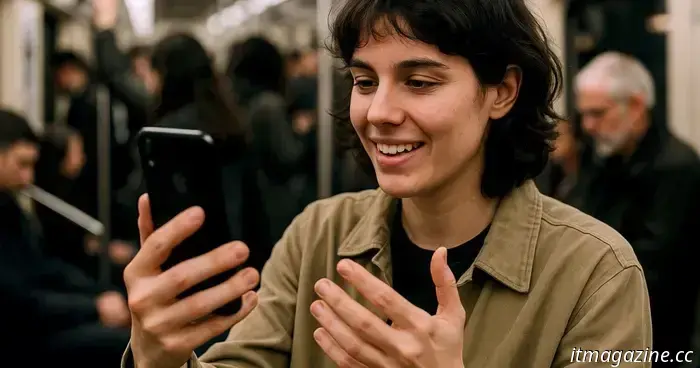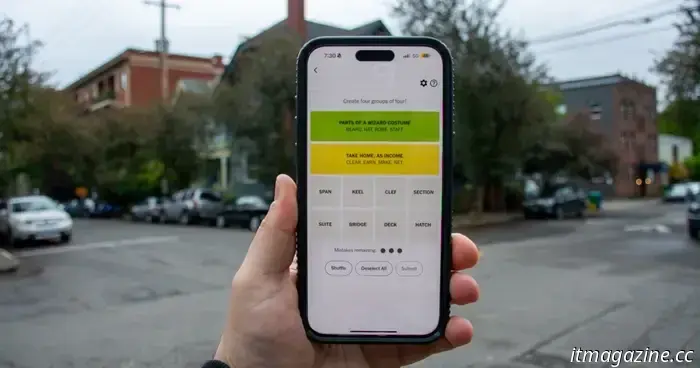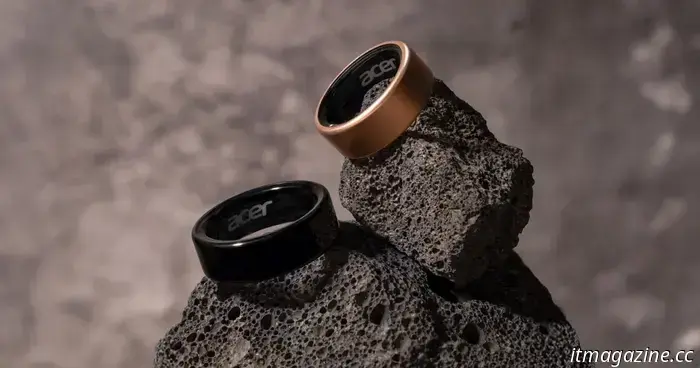
Kindly purchase some earbuds.
The first time I witnessed someone playing audio from their phone in public was while riding on a city bus, and I was shocked for two reasons. Firstly, the volume was loud enough not just for the person next to them to hear, but our entire section of the bus could hear it. Secondly, it was a FaceTime call, and neither party seemed at all bothered by having their conversation in public; they appeared completely unaware.
That incident happened a few years ago, and since then, the issue of loud audio in public spaces has only worsened. I've come across it in grocery stores, airport lounges, coffee shops, and even while walking down the street. It's not limited to phone calls or FaceTime either—music, YouTube, TikTok, Instagram, and any other media with sound can be heard coming from someone's phone speaker. During a recent episode of the New York Times' excellent tech podcast, Hard Fork, a listener described this issue as an epidemic, and I don’t believe that’s an exaggeration.
We all know the easy solution: use wired or wireless headphones or earbuds. It’s that straightforward. However, perhaps it isn’t so simple.
I’ll give these individuals the benefit of the doubt. Maybe they’ve been misled by misinformation—common misconceptions about headphones and earbuds—which could explain their behavior.
With that in mind, let’s clarify some of the more frequent misunderstandings regarding headphones and earbuds.
They’re too costly.
When Apple released the first-gen AirPods in 2016, wireless earbuds were indeed expensive. Almost a decade has passed since then, and the market for wireless earbuds and headphones has become highly saturated. While the biggest brands still sell their top products for hundreds of dollars, there are also numerous affordable alternatives starting as low as $20.
The inexpensive products aren’t worth purchasing.
Five or six years ago, I would have wholeheartedly agreed with that statement. Today, that’s no longer the case. Take Moondrop’s Space Travel earbuds, for instance. I’ve been using these $30 wireless earbuds for a month, and their performance for basic functions is surprisingly good. They are comfortable, sound great, and even offer a bit of active noise cancellation (ANC). They work just fine for calls, provided it’s not too windy or noisy.
Of course, they lack many additional features found in pricier models, such as wireless charging, multipoint connectivity, and wear sensors. Their battery life is basic too at only four hours per charge (12 total when including the unique, transparent charging case). Nevertheless, they deliver what we expect from any set of earbuds, costing less than an average meal for a family of four at McDonald's.
Even if you spend less than $30, chances are they will at least sound decent. They may not impress you greatly, but the era of truly poor sound quality is behind us.
Here’s a roundup of the best wireless earbuds and headphones available for under $100.
I have an iPhone, so I need AirPods.
I’m sure Apple would love if this were true, but that’s not the case. Any Bluetooth earbuds or headphones can be connected to an iPhone. I’ve tested hundreds of these products, and I have never encountered one that wouldn’t connect to my iPhone. I’ve heard claims—even from those who should know better—that iPhone users should rely on AirPods for a more reliable connection. There are no studies backing this up, and my experience does not support that belief.
However, it is accurate that when connection issues arise, they are usually more related to the design and engineering of the earbuds or headphones rather than the phone itself. And since Apple’s AirPods are—like them or not—well-designed for connection quality, they may indeed be more dependable than lesser products.
I can’t wear earbuds; they’re uncomfortable or they fall out.
This is not a myth. Many people struggle to keep earbuds in their ears due to the shape of their anatomy. The good news is that there are now more options than ever, including a new category of earbuds called open-ear earbuds.
Generally, earbuds are either semi-open, sitting in front of your ear canal without sealing it (like AirPods), or closed, which do seal the ear canal (e.g., AirPods Pro). Both types depend on contact with the concha of the ear to stay in place. If you have a small or irregularly shaped concha, traditional earbuds may not fit properly, no matter what you attempt.
Open-ear earbuds are different. They come in two primary styles: earhook and ear clip. Both types position their speakers just outside the ear canal, which eliminates discomfort from having something in that area. Earhooks wrap around the top of the ear (ensuring a very secure fit), while ear clips fit around the side of the ear. If you’ve struggled to get a proper fit with standard wireless earbuds, open-ear models are an excellent alternative. Check out our




Other articles
 NYT Mini Crossword today: solutions for the puzzle on Sunday, May 18.
NYT Mini Crossword today: solutions for the puzzle on Sunday, May 18.
 Sean Penn believes that Jennifer Lawrence is likely the last remaining movie star.
The actor and director mentioned that he has not watched any of Timothee Chalamet's films so far.
Sean Penn believes that Jennifer Lawrence is likely the last remaining movie star.
The actor and director mentioned that he has not watched any of Timothee Chalamet's films so far.
 NYT Connections: clues and solutions for Sunday, May 18
NYT Connections: clues and solutions for Sunday, May 18
 NYT Crossword: solutions for Sunday, May 18
NYT Crossword: solutions for Sunday, May 18
 Acer is developing a smart ring and approaching it in the right manner.
Acer has introduced a quite comprehensive smart ring named FreeSense. It has an attractive design and, fortunately, does not impose any subscription fees on customers.
Acer is developing a smart ring and approaching it in the right manner.
Acer has introduced a quite comprehensive smart ring named FreeSense. It has an attractive design and, fortunately, does not impose any subscription fees on customers.
 Murderbot: Chris and Paul Weitz discuss effective strategies for adapting books into films.
In an interview with Digital Trends, Chris and Paul Weitz discuss the adaptation of Murderbot into a sci-comedy for Apple TV+.
Murderbot: Chris and Paul Weitz discuss effective strategies for adapting books into films.
In an interview with Digital Trends, Chris and Paul Weitz discuss the adaptation of Murderbot into a sci-comedy for Apple TV+.
Kindly purchase some earbuds.
The trend of people playing audio from their phones at high volume has reached epidemic proportions. Using a pair of earbuds could alleviate this issue.
